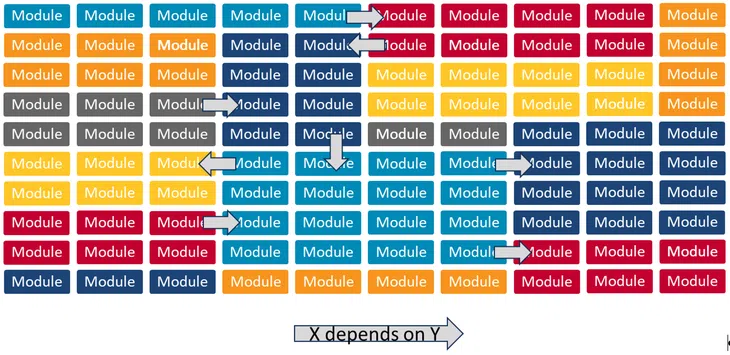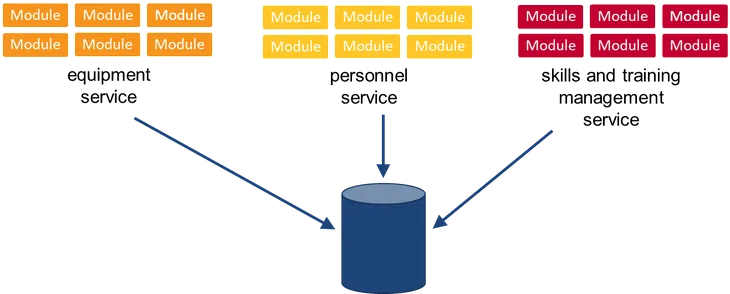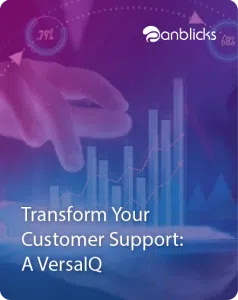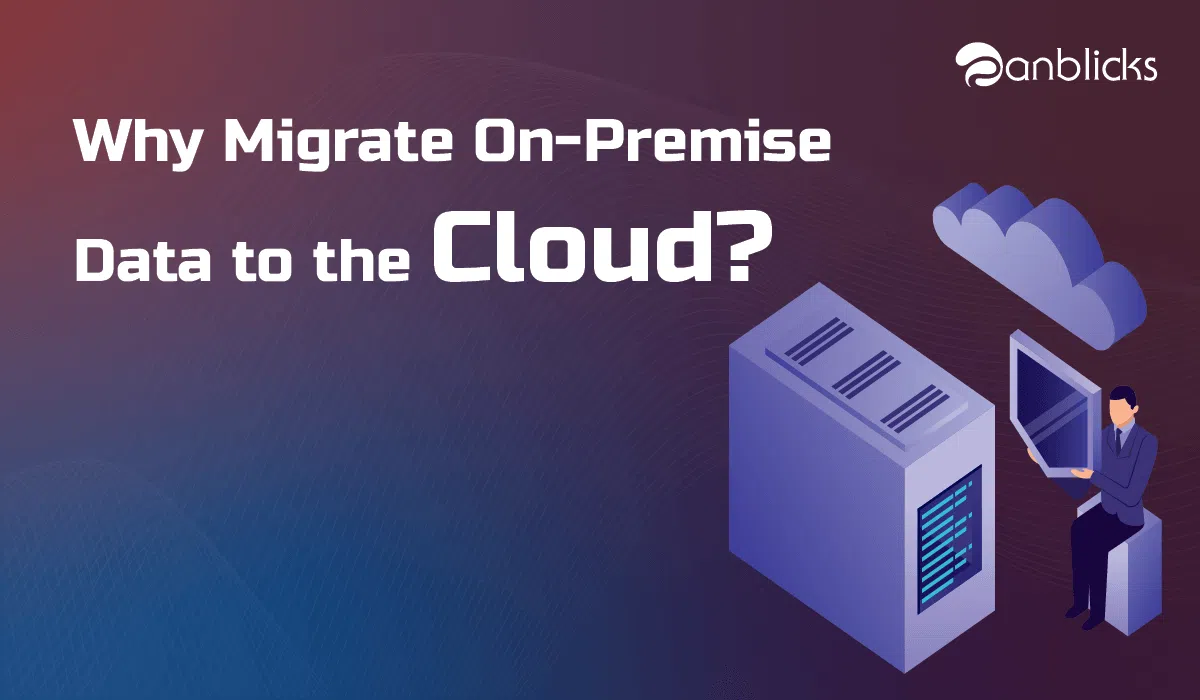
8 Step Guide to Migrate Monolithic Applications into Microservices
TL;DR
- Assess and break down the monolithic architecture into modular components.
- Highlights the role of predictive algorithms in enhancing decision-making across industries.
- Plan for gradual migration, testing, and deployment to ensure stability.
A monolithic application can be defined in multiple ways, such as a legacy application or codebase that has evolved organically. It can also be defined as an application that lacks domain clarity and module boundaries.
However, the best way to describe a monolithic application is the application that grew over time, became unmanageable and extremely difficult to understand, and has low cohesion and high coupling. On the other hand, a microservice architecture on AWS allows organizations to enable a rapid, frequent, and reliable delivery range of complex applications.
Therefore, several global organizations are now investing their resources to convert their monolith applications to microservices using AWS CloudFormation.
However, converting monolithic applications into microservices is not an easy task to accomplish. This is because a microservice architecture promotes an application consisting of various independent services encapsulating business capabilities.
Once migrated to microservice, each service exposes an API application, which is discoverable and can be used self-serve. Since we know that converting a monolithic application into a microservice is not easy, let’s look at some of the drawbacks of monolithic applications for businesses.
Drawbacks of Monolithic Applications
- Size and Complexities Limitation :Monolithic applications are highly constrained by Size and complexities. To make an application bigger, the organization has to incorporate more services into it, making it slower to deploy and execute.
- Difficult to Update: Updating a monolithic application is one of the most daunting tasks for any business. The reason being, to update a monolithic application, organizations have to redeploy the entire application costing them time and money. Moreover, if an organization manages to update a monolithic application, the changes are not very well understood by the stakeholders; hence rigorous manual testing is required.
- Poor Scalability: Monolithic applications can be challenging to scale when different modules have conflicting resource requirements. This because several services call for resources that are interconnected with other services of the application. Therefore, when called, the engagement of resources avoids avoid hampering the scalability of the application.
- Meager Reliability: Reliability is one of the most impacting factors propelling the stakeholders to migrate monolithic applications to microservices. For instance, in the case of a bug, the entire process of the monolithic application is hampered. Moreover, the application might have the same service for multiple instances. In that case, the bug will reflect an entire application.
Looking at drawbacks, you might want to know the benefits of microservice architecture over monolithic applications. Let’s have a look:
Benefits of Microservices
- Smoothen the Complexities:The microservice architecture on AWS tackles over complexities of a monolithic application by decomposing the application into a set of manageable services. These services are faster to develop and easier to understand, making them swift to use and maintain.
- No Barriers to New Technologies Adoption: AWS Microservice architecture reduces the barrier to adopting new technologies. The architecture provides this flexibility as developers are free to choose whatever technologies make sense for their service and are not bound to the choices made at the start of the project.
- Independent Deployment: The architecture allows businesses to deploy microservices independently. This makes continuous deployment possible for organizations.
- Better Agility: Any fault in a microservices application affects only a particular service, not the whole solution. So all the changes and experiments are implemented with lower risks and fewer errors.
Related Blog: Six Key Benefits of Application Modernization
Since now know the drawbacks of monolithic applications and the benefits of microservice architecture for the same applications. Now let’s look at how you can modernize your monolithic application by migrating to microservice:
Step 1: Identify the Logical Component

There are three major components with the data used in the system:
- Data objects
- Data actions
- Job to perform and use cases
The logical construct of the data that is being used in the system is data objects. The data actions are the commands used on one or more data objects, possibly on different types of data, to perform a task. Whereas the job to perform is the function called to perform a task on the available data.
While combining the multiple systems into a unified approach, all the three components data objects, data actions, and jobs to perform for each system must be identified. These components are implemented as modules in the codebase. Identifying these components will allow the system architects to determine the actions to be performed on the data sets that shall come in handy in the later phases of the application.
Step 2: Flatten or Refractor Components
Step 3: Identify the Dependencies of the Components

Step 4: Components Group Identification
Step 5: APIs for Remote User Interface
The remote user interface is the only mode of communication among the system, its components, and the system’s users. The remote user interface must be scalable to adopt new features and technologies as the system evolves over the period.
The interface must be usable during migration and also once the microservice is deployed. Since the components are likely to change as they are worked upon, the remote user interface must manipulate the data when it is migrated from monolithic to microservices on AWS.
This step aims to develop a unified API through which the user interfaces with the system and manipulates the data. The remote user interface is just a communication platform for the user, machines, and data. Everything else depends on this API.
Hence, it should be designed and developed to ensure the existing data interactions are not altered significantly. Instead, it should be scalable enough to encapsulate new data sets, functionalities, objects, attributes, and actions as they are identified and made available.
Once the API layer is in place, all new functionality should be added through the API, not through the legacy applications.
Step 6: Migrate the Components to Macroservice

Microservices have a more relaxed posture towards sharing data repositories and allow more complex data object interactions. Therefore it is advisable to this step as an interim process while migrating your monolithic application to microservices.
Not moving to microservice is because of the complexity of monolithic applications since they might be built using intertwined logics that may cause issues while converting to microservices.
The goal of this step is to move the components to separate projects and create separate deployments. At a minimum, each microservice should be independently deployable from within the system’s continuous integration (CI) and continuous deployment (CD) pipeline.
Step 7: Migrate Macroservice to Microservice

Step 8: Deployment and Testing
Once a microservice or microservice is ready for deployment, the next step is integration testing and deployment. The monolithic system must be configured to use the new service for its data needs instead of its legacy data store.
Finding all calls to the datastore from within the monolithic legacy system can be challenging. In a testing environment, it might be possible to remove the legacy data related to the migrated datasets for which the new microservice is now responsible.
Today businesses are in a constant race to update their infrastructure and outdated systems to avoid the challenges of legacy IT systems. These systems are the core of the growth of an organization therefore keeping them up-to-date is highly important.
And what’s better than a perfect strategy and roadmap that can help you modernize your legacy systems with the latest state-of-the-art technologies. Connect with us, for a full-proof assessment and strategy for modernizing your monolithic application to microservice.



